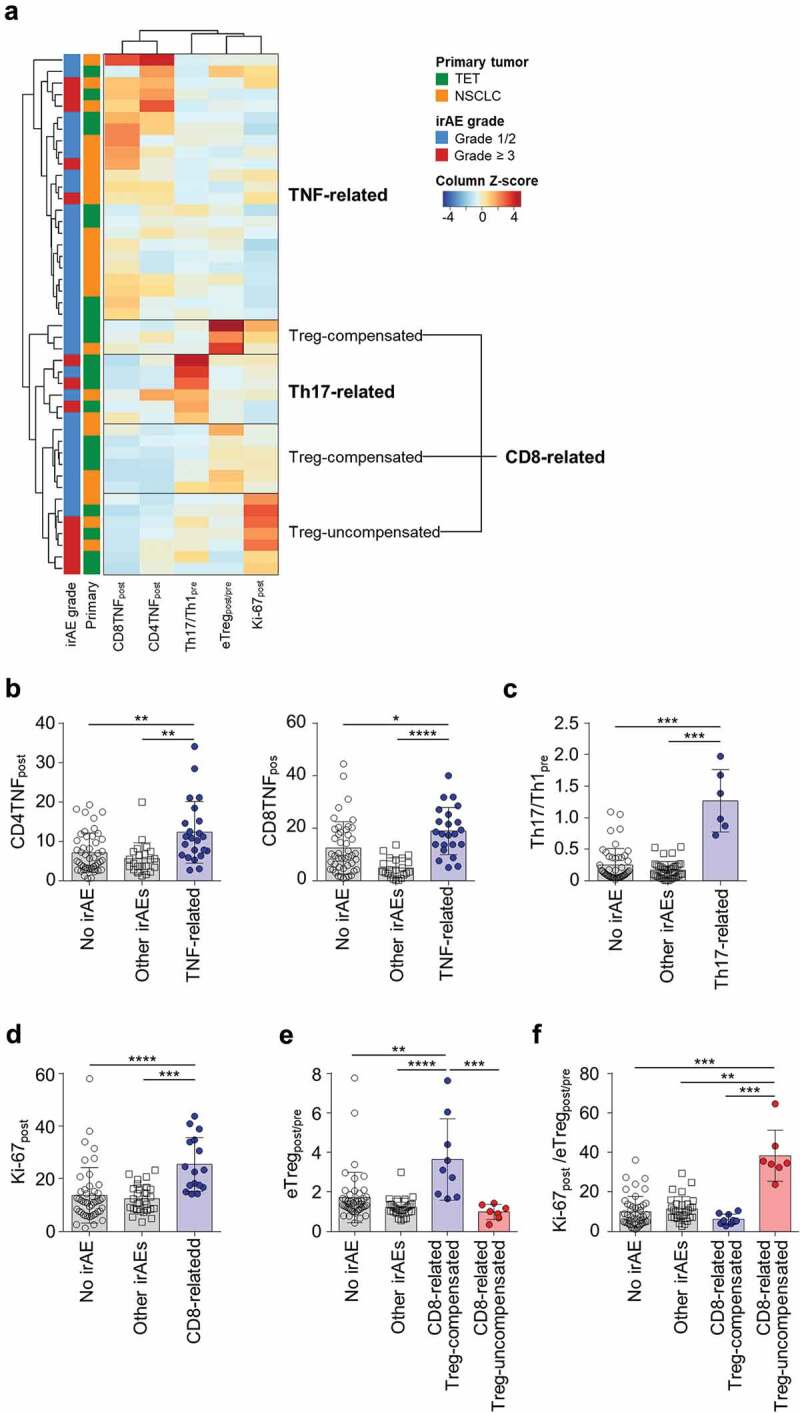Figure 4.

Clustering of patients with any grade irAEs based on peripheral blood T-cell parameters.
(A) Unsupervised hierarchical clustering using five T-cell parameters (eTregpost/pre, Th17/Th1pre, Ki-67post, CD4TNFpost, and CD8TNFpost) in the 45 patients with any grade irAEs (1 patient/row). The z-scores are column normalized. Patients with grade 1/2 irAEs are indicated in blue and patients with grade ≥3 irAEs are indicated in red. Patients were clustered into four subgroups; TNF-related, Th17-related, CD8-related Treg compensated, and CD8-related Treg non-compensated. (B) CD4TNFpost or CD8TNFpost in patients with no irAE (n = 46), other irAEs (Th17-related and CD8-related; n = 22), and TNF-related irAEs (n = 23). (C) Th17/Th1pre in patients with no irAE (n = 46), other irAEs (TNF-related and CD8-related; n = 39), and Th17-related irAEs (n = 6). (D-F) Ki-67post (D), eTregpost/pre (E), ratio of Ki-67post and eTregpost/pre (Ki-67post/eTregpost/pre) (F), in patients with no irAE (n = 46), other irAEs (TNF-related and Th17-related; n = 29), CD8-related Treg-compensated (n = 11), and CD8-related Treg-uncompensated irAEs (n = 7). Error bars indicate standard deviation of the mean. Statistical analyses were performed using Kruskal–Wallis test and post-hoc analysis by Dunn’s test (B-F). *P < .05, **P < .01, ***P < .001, ****P < .0001.
